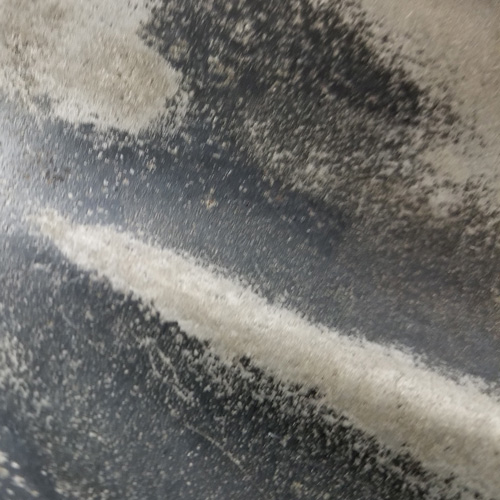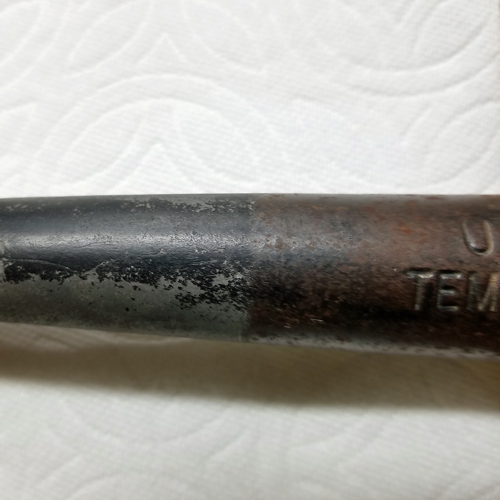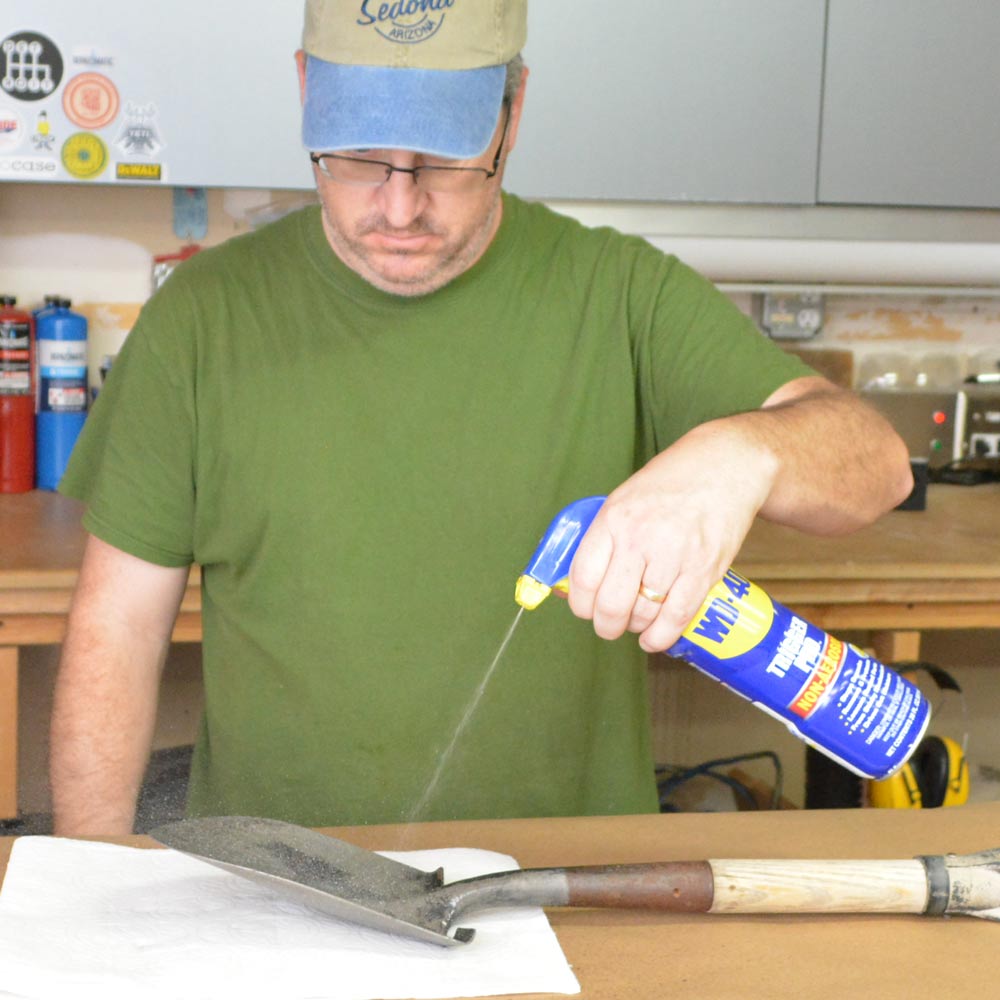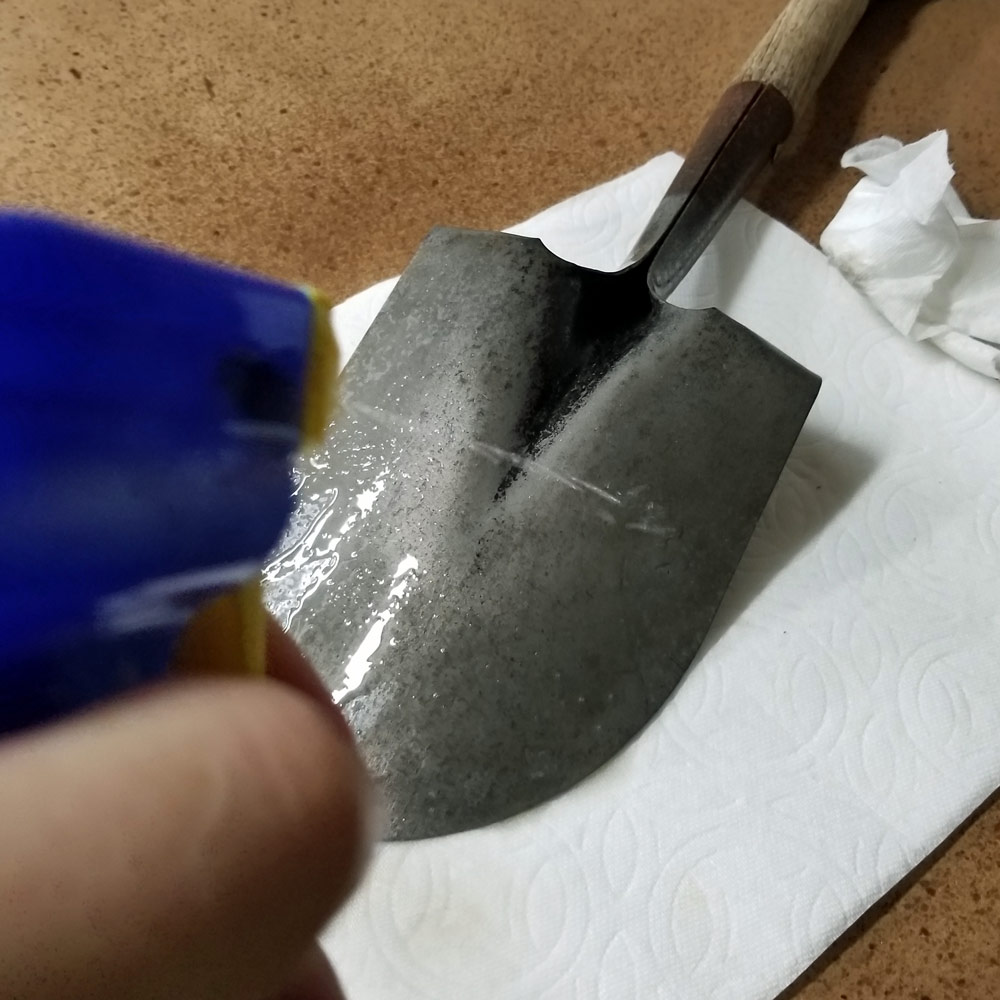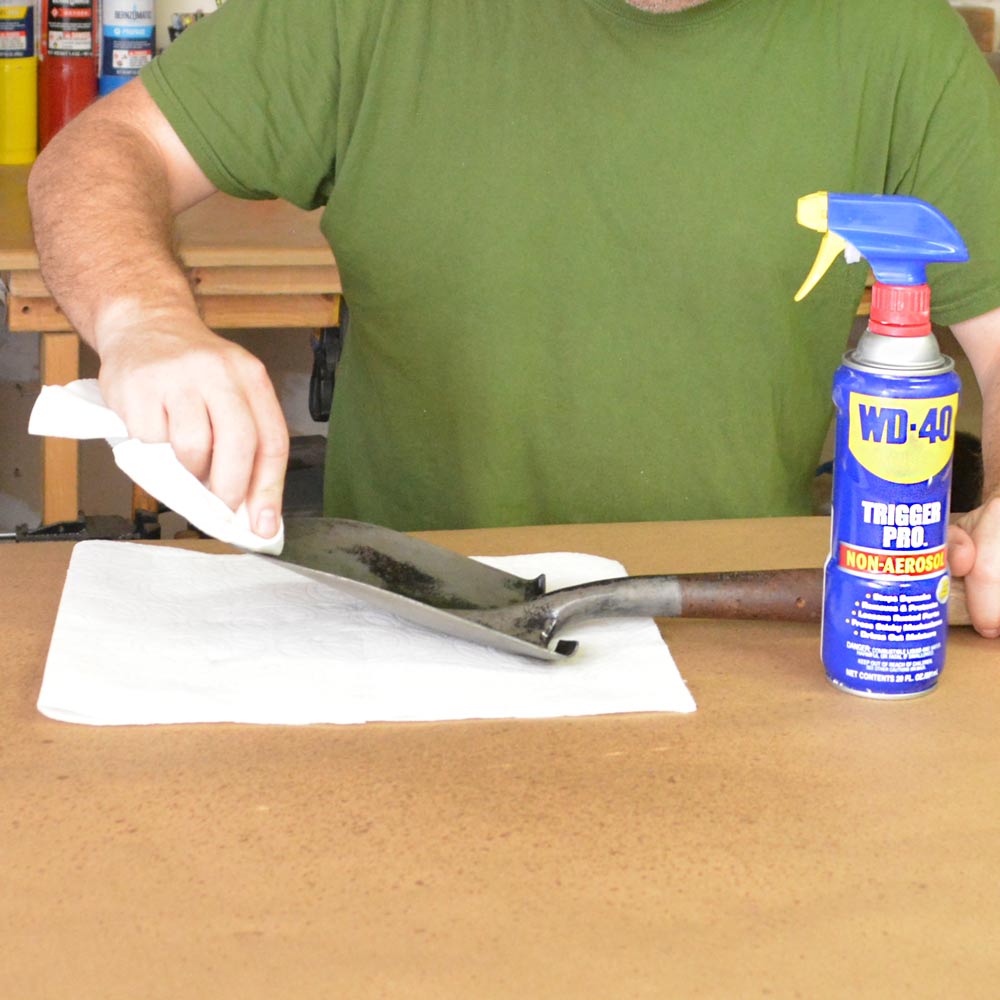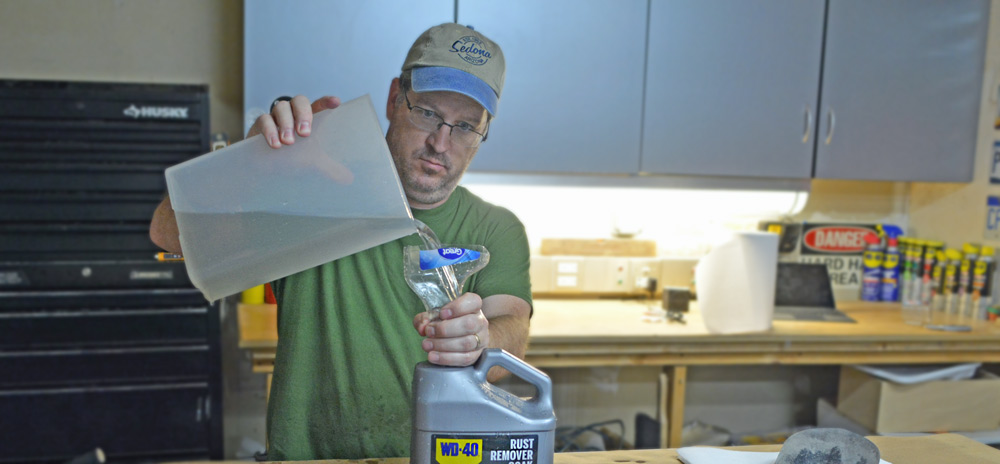Restoring an old shovel, left Outside To rust
Our busy daughter left my short D-handle, digging spade out in the yard. She's always out in the desert landscape, Minecrafting trenches, mini-mountains, and earthen fortresses. This time, I missed that she'd left one of my tools outside in the elements for at least a month.
It was out in the elements through the early spring rains and the cruel, inevitable advance of summer heat. The plastic faded, the wood dried, and inevitably the steel blade succumbed to rust. Rust is a travesty against tools. There's no way a self respecting DIY weekend warrior such as myself would be willing to hang this malnourished implement on the wall.
Rust is a travesty against tools.
I carted the lil' spade into the workshop for a little triage. The rust was just starting to really bite into the metal. It was clinging on hard enough so that I couldn't wipe it off. It wasn't a total loss; I could save it.
This post is sponsored by WD-40 Company. All the experience and opinion is 100% my own.
Rust Fighting Products
Fire burn and caldron bubble.
Fillet of a fenny snake,
In the caldron boil and bake;
Eye of newt and toe of frog,
Wool of bat and tongue of dog,
Adder's fork and blind-worm's sting,
Lizard's leg and howlet's wing,
For a charm of powerful trouble,
Like a hell-broth boil and bubble.
The internet is chock full of witch's brew, rust-fighting concoctions you can craft from a variety of acids, powders, and juices.
These home remedies usually involve a good dose of rubber-gloved, elbow grease with steel wool, sandpaper, and scrubbing pads.
I was fresh out of lizard tails and salamander tongue; I'm not really much for following recipes any more complex than scrambled eggs with cheese and whatever else I can dice up and chuck into a frying pan. I wanted something simple.
I snagged a gallon jug from the bottom of the display at my local home center and took it back to the workshop.
This stuff looked super simple to use, no mixing, no fuss.
Step 1: Clean The Tool
The rusty tool should be fairly clean and free of grease and oils. Since my shovel was abandoned in the desert and dried out with no hint of oils. I wouldn't need to use a detergent or degreaser to strip it clean. I just took my shop brush to it and swept off the loose dust and dirt.
Step 2: Find A Container
If anyone in my family asks where one of our plastic cereal storage boxes went, just play dumb. You didn't see it here. I needed a vessel to submerge my shovel in. Remember, tools are more expensive than breakfast cereal,... well, a little more expensive than breakfast cereal, these days.
Remember, this cereal container does not look familiar.
I poured the whole jug into the plastic container. The Rust Remover Soak, was clear and flowed like water. There was only a faint scent to it, nothing chemically or acidic to burn the nostrils.
Step 3: Walk Away
I just left it to do its thing. Soak.
The manufacturer says light rust can be treated in 30 minutes, medium for 8 hours, and heavy for 24 hours. I headed outside to work on some electrical upgrades for the kitchen remodel (more on that in a future post) and pretty much forgot about my shovel.
The world's ugliest tea bag.
Step 4: Remove and rinse
Walking up, I could tell there had been some magic. The solution was a less clear, just a little grayish. I couldn't see any rust.
Wow!
The rust and tarnish was completely gone. The blade was gleaming steel, with remnants of original paint.
It took the shovel over to the laundry tub and gave it a good rinse before drying it off. The instructions say a second soak may be needed if there is remaining "pits" of rust, but my shovel was completely rust free.
There was a sharp line on the shaft where the solution had stopped. Surface rust and patina were above, with bare steel and old paint below.
Step 5: Protect and Save
Unprotected, bare metal can be subject to some quick, flash rust. I zapped the blade with the WD-40® Multi-Use Product to help protect the blade.
I used the non-aerosol, WD-40® Trigger Pro® 20 oz
I gave the dried wooden handle a quick toot of urethane from a spray can.
Most importantly, I protected the shovel by putting it up, just out of reach. I don't mind our little crafty girl doing her excavations; I just want to know when tools might be left behind.
Safe and sound with his buddies.
Step 6: Until Next Time
The WD-40® Specialist® Rust Remover Soak can be reused over and over. It keeps working until the solution turns black. The instructions say that the used liquid should not be mixed with fresh stuff. It wasn't a problem for me, since I'd used the whole gallon to soak the shovel.
Why yes, that is a hand-crafted, one-of-a-kind funnel
That's it, a super easy product to remove rust from tools without resorting to the the alchemical arts, mixing powders. I love that it's reusable for a while. The label says it's non-toxic and biodegradable, able to quickly dissolve rust without harming surrounding parts, trim, gaskets or paint.
I wish I'd had some of this stuff back when I lived in East Texas. It was so humid there, I'd blink and my tools would rust. I'm going to try something super rusty next.
What do you think, do you have anything you'd like to soak the rust off of?
Thanks to WD-40 Company for sponsoring this post and exposing me to this cool product. All the experience and opinion are 100% my own.
















